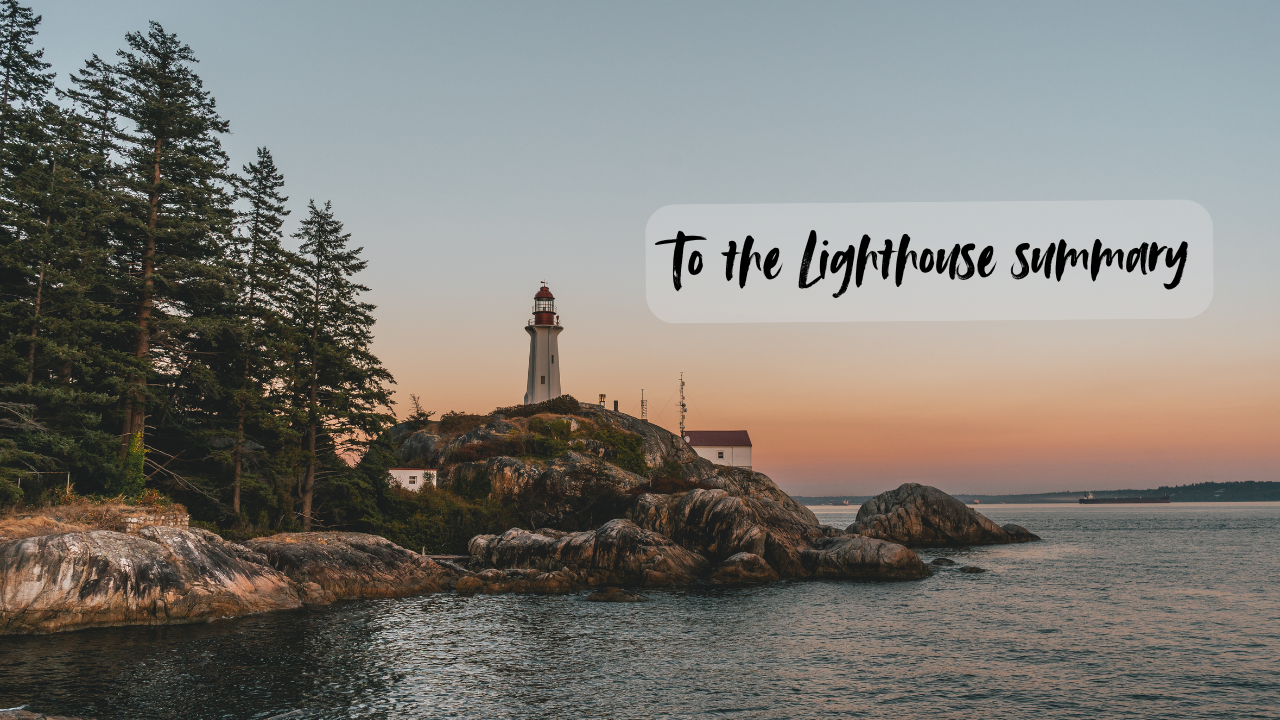Virginia Woolf’s To the Lighthouse isn’t your typical beach read. Sure, it takes place by the sea, and there’s a lighthouse involved (spoiler: they don’t get there right away), but Woolf isn’t interested in giving you an easy-breezy summer novel. Nope, this is a beautifully complicated exploration of family, time, memory, and—because it’s Woolf—lots of introspection.
If you’re ready to dive into a story that’s as much about what isn’t said as what is, buckle up. Here’s a summary of To the Lighthouse that’ll take you through Woolf’s waves of consciousness without leaving you stranded.
Part I: The Window
The novel kicks off with the Ramsay family vacationing in their summer home on the Isle of Skye, Scotland, which is as picturesque as it sounds. Right away, we meet Mrs. Ramsay, the beating heart of the family. She’s nurturing, graceful, and quietly holding everyone together. Her husband, Mr. Ramsay, is a philosopher who spends most of his time worrying about his intellectual legacy. Basically, he’s the guy at the party who corners you to talk about existential dread.
Their eight kids are buzzing around the house, and young James Ramsay is fixated on one thing: he wants to go to the lighthouse. Mrs. Ramsay assures him it’ll happen tomorrow, but Mr. Ramsay, ever the realist, squashes the dream with a simple “no.” The weather won’t allow it, he says, though you get the feeling he’d say no just for the heck of it.
The rest of the first part of the novel? It’s essentially a day in the life of the Ramsays and their various houseguests, like Lily Briscoe, an artist struggling with her painting and, like all of us, with life in general. While nothing earth-shattering happens plot-wise, we dive deep into the characters’ inner worlds. Woolf’s stream-of-consciousness technique gives us front-row seats to their thoughts, hopes, insecurities, and—especially in Mrs. Ramsay’s case—the pressure of holding everything together while managing everyone else’s emotional baggage.
Part II: Time Passes
If Part I was all about the slow simmer of life, Part II is a fast-forward button. Woolf zooms out, and over the course of a few short chapters, we see time pass—years, to be exact. And, spoiler alert, things get a little bleak. Mrs. Ramsay dies, the house falls into disrepair, World War I happens, and some of the Ramsay kids die as well.
This section is about loss and the inevitable march of time. It’s like Woolf looked at the world and said, “Let’s remind everyone that nothing lasts forever.” Thanks, Virginia.
The house, once alive with activity, is now quiet and crumbling, overrun with dust and decay. Time, Woolf reminds us, doesn’t care about your family vacations or your philosophical musings—it just keeps moving forward.
Part III: The Lighthouse (Finally)
After all the years that passed in Part II, we’re back at the Ramsays’ summer home. Mr. Ramsay decides it’s finally time to take James (now a surly teenager) and his sister Cam to the lighthouse. Yes, the lighthouse! The one that’s been looming on the horizon for the whole novel.
Meanwhile, Lily Briscoe is back, too, and she’s determined to finish the painting she started all those years ago. But this time, she’s not just painting a portrait of Mrs. Ramsay and the family; she’s grappling with bigger questions about art, life, and what it means to create something that lasts.
As Mr. Ramsay and the kids head to the lighthouse, there’s tension (surprise, surprise). James is still bitter about his dad’s coldness and harshness from Part I. But once they get there, there’s a moment of quiet reconciliation—a kind of peace, though not without its awkwardness. The lighthouse represents different things to different people: to young James, it was a childhood dream; to Mr. Ramsay, it’s just a destination; to the reader, it’s a symbol of longing, memory, and the distance between people.
Back at the house, Lily finishes her painting, but not in a triumphant, “I’ve figured out life” kind of way. It’s more like, “I’ve made my mark, and that’s enough.” In the end, she realizes that life is unfinished, messy, and full of gaps we can never fully understand. And yet, there’s beauty in that, too.
The Bottom Line: It’s About the Journey, Not the Lighthouse
To the Lighthouse is a novel where not much happens in the traditional sense—no explosive action, no grand plot twists—but at the same time, everything happens. Woolf captures the richness of everyday life and the deep, often conflicting thoughts of her characters in a way that makes you reflect on your own existence (and maybe reconsider that family vacation).
At its core, To the Lighthouse is about time, memory, and the relationships that define us. It’s a slow burn, but once you settle into Woolf’s rhythm, you’ll find yourself caught in the tides of her characters’ inner worlds. Just don’t expect the lighthouse to solve all your problems. It’s more of a symbol than a destination, after all.
